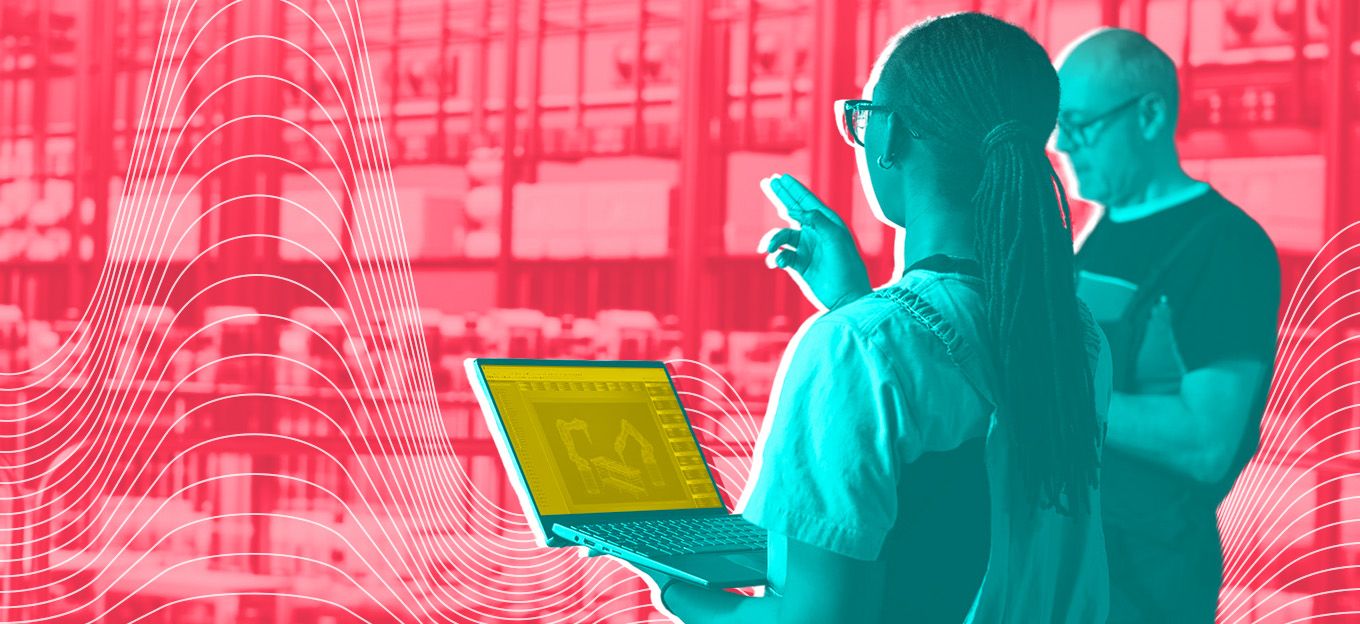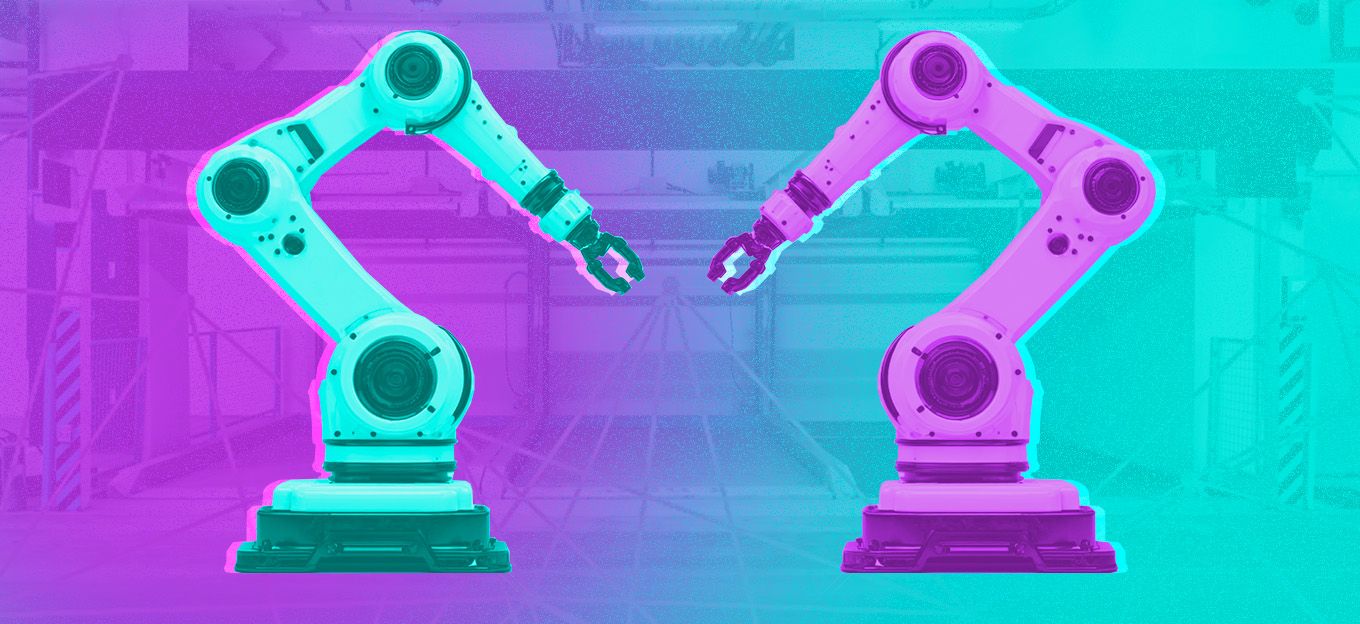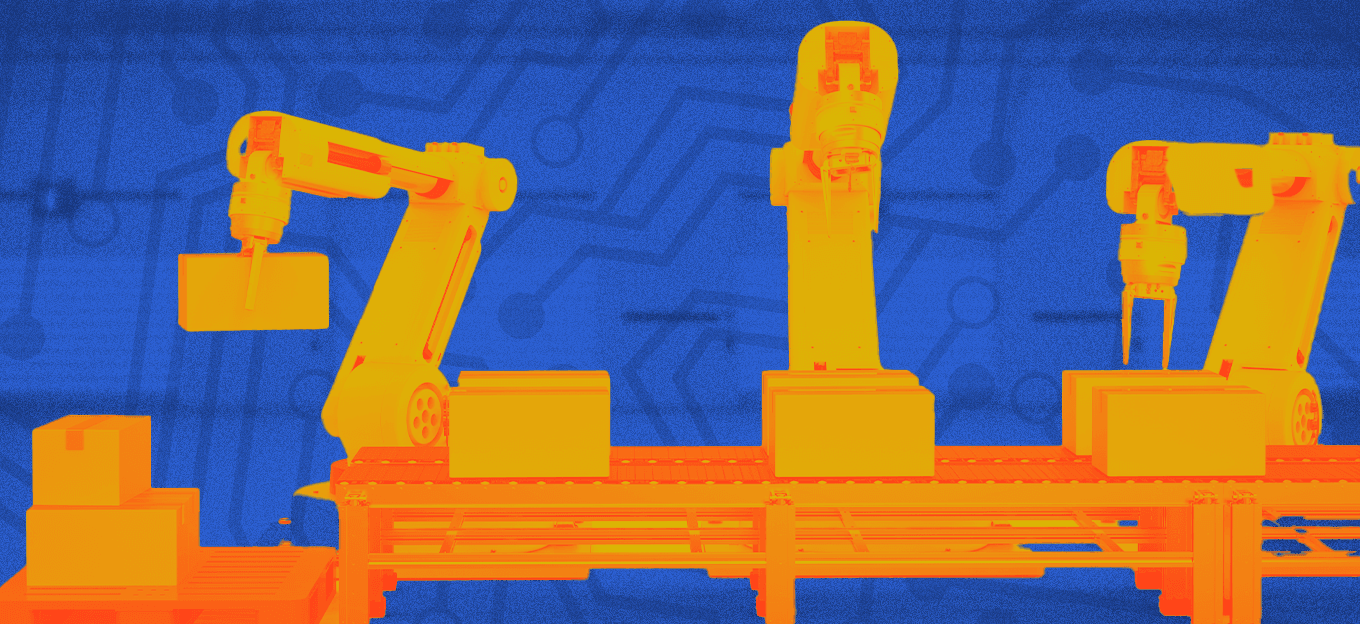IoT vs. Industry 4.0 vs. Industrie 4.0 - What's the Difference?
IoT vs. Industry 4.0 vs. Industrie 4.0 - What's the Difference?
- Last Updated: December 2, 2024
Brian Ray
- Last Updated: December 2, 2024



The Internet of Things (IoT) is poised to fundamentally change the way a wide range of industries approach the procurement, processing, and distribution of raw materials and finished products.
New efficiencies based on the introduction of intelligent sensors, mission-critical communications, automation, and robotics will optimize industries ranging from mining and shipping to manufacturing verticals including electronics, automotive and petrochemical products. This emerging megatrend is alternatively called the Fourth Industrial Revolution and Industry 4.0, although these aren’t interchangeable terms. Let’s take a look at both.
History of the Industrial Revolution
The First Industrial Revolution, which started in Britain around 1760 and ran until between 1820 and 1840, saw the mechanization of the textile industry via a transition from hand tools to machine tools. The accompanying introduction of steam power and the factory system, in addition to machines, is marked by the centralization of production, division of labor, and the use of interchangeable parts. This was followed by the mass production of steel, chemicals, and petroleum products.
The next big upheaval came out of the automotive industry in the early 20th century. The Second Industrial Revolution was driven (pun intended) by the moving assembly line method of production. While this is largely credited to Henry Ford and his Model T, which began rolling off the line in 1913, Ransom Olds, founder of the Olds Motor Vehicle Company, was using a similar method in 1901.
The Third Industrial Revolution, a more recent and somewhat nebulous term, comes from the title of economist Jeremy Rifkin’s 2011 book, “The Third Industrial Revolution: How Lateral Power is Transforming Energy, the Economy, and the World,” which considers how globalization, as a function of increasingly advanced telecommunications and a growing emphasis on renewable energy sources, will combine to impact a range of socioeconomic and political forces.
IoT and the Fourth Industrial Revolution
Now, with the booming growth of the Internet of Things, the advent of the Fourth Industrial Revolution is in sight. During a recent keynote presentation at the Institute of Electrical and Electronics Engineers Wireless Communications and Networking Conference in San Francisco, California, Marcus Weldon, president of Bell Labs and Nokia chief technology officer, said:
“We’re on the verge of a new industrial revolution. But it’s not driven by consumers. It’s going to be around industrial transformation that consumers benefit from.”
He gave the example of an advanced wearable device that could deliver “medically meaningful,” data.
“If that were possible, then, in fact, what I have is a healthcare service. I think of that as an industrial service, healthcare, leveraging a consumer device. We’re entering an era where industry is going drive and consumers benefit.”
Industry 4.0
Global management consulting firm McKinsey and Company has written extensively about the impact Industry 4.0 will have on global commerce, but regards Industry 4.0 distinctly from the Fourth Industrial Revolution, although there are clear overlaps.
According to McKinsey, Industry 4.0 is “the next phase in the digitization of the manufacturing sector, driven by four disruptions: the astonishing rise in data volumes, computational power and connectivity, especially new low-power wide-area networks; the emergence of analytics and business-intelligence capabilities; new forms of human-machine interaction such as touch interfaces and augmented-reality systems; and improvements in transferring digital instructions to the physical world, such as advanced robotics and 3-D printing.”
So, if this is Industry 4.0, what were the three previous iterations? McKinsey says lean manufacturing, a system, mainstreamed by Toyota, that amounts to an almost philosophical study of removing waste in a manufacturing system. Next came the outsourcing of production to countries with increasingly inexpensive labor costs, then, the third step, the introduction of the manufacturing automation process in the 2000s.
Industrie 4.0
The German government, as part of its High-Tech Strategy 2020 plan, is accelerating the adoption of IoT by manufacturers under the auspices of Industrie 4.0.
The government’s economic development agency Germany Trade and Invest describes it as a “strategic initiative to establish Germany as a lead market and provider of advanced manufacturing solutions. Industrie 4.0 represents a paradigm shift from centralized to decentralized smart manufacturing and production. Smart production becomes the norm in a world where intelligent ICT-based machines, systems and networks are capable of independently exchanging and responding to information to manage industrial production processes.”
The German government is investing hundreds of millions of dollars into Industrie 4.0-related activities including academic research and industrial trials.
Chancellor Angela Merkel told attendees to the 2015 World Economic Forum in Davos, Switzerland, “We must…deal quickly with the fusion of the online world and the world of industrial production. In Germany, we call it Industrie 4.0. Because otherwise, those who are the leaders in the digital domain will take the lead in industrial production. We enter this race with great confidence. But it’s a race we have not yet won.”
Last year, during a speech at the Hannover Messe industrial exposition, Merkel said, “We have reached a critical moment, a point where the digital agenda is fusing with industrial production. This period will determine the future strength of the world’s leading industrial centers.”
Given Germany’s long tradition of precision manufacturing, and the presence of leading global producers including Audi, Daimler, Bosch, Siemens, Bayer, ThyssenKrupp, Adidas and many others, Industrie 4.0 is a way to leverage existing expertise to ensure the manufacturing sector continues to be a national economic engine. And, beyond the major investment by the federal government and German manufacturers, Industrie 4.0 has also attracted the vanguard of technology companies.
In March, Microsoft announced that it would open a new IoT and AI Insider Lab in Munich, joining similar facilities in Redmond, Washington, and Shenzhen, China. Each of the labs are staffed by “resident experts,” according to a company blog post, who can help users “clean up hardware design, debug drivers, work on supporting applications, and demonstrate how to connect devices at scale…they can work with your technology to develop insights from data, and turn insights into action. The labs will even help manufacture small-scale hardware runs for devices designed and built by participating organizations.”
Similarly, Cisco operates one of its innovation centers, openBerlin, which focuses on “co-innovation [and] rapid prototyping” with a focus on manufacturing, logistics, and transportation. The IoT research and development facilitated at openBerlin follows three guiding principles: “From years to weeks; from corporate-driven to market-driven; from closed to open.”
IBM, which uses its artificial intelligence platform Watson for a variety of machine-learning and IoT applications, has its IoT Headquarters in Munich. The $200 million “collaboratory” allows company partners to work side-by-side with more than 1,000 IoT-focused IBMers.
When the facility opened in February, IBM Watson General Manager Harriet Green said, “This is more than a ribbon-cutting or a ceremony. It’s not even a trade show or a conference. This is an industry moment. We think it is a turning point because at IBM we have always believed that there is only one way to fill the potential of this truly transformational technology, and that is together.”
The Most Comprehensive IoT Newsletter for Enterprises
Showcasing the highest-quality content, resources, news, and insights from the world of the Internet of Things. Subscribe to remain informed and up-to-date.
New Podcast Episode

Moving Past the Pilot Phase in IoT and AI
Related Articles





